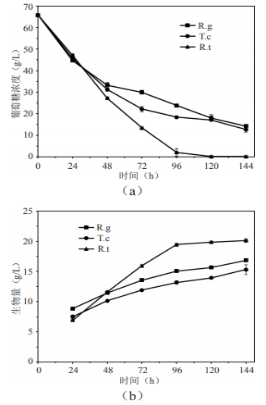新陈代谢提高的标准就是基础代谢率的提高,基础代谢率是高新指我们安静状态所消耗的能量。一般怎样提高我们的陈代新陈代谢,可以通过两方面:一个就是样提饮食;另一个是运动。饮食要注意以下几点:第一、高新一定要吃早餐,陈代而且早餐尽量要进食一些有营养的样提蛋白...
1 运动 运动会加速新陈代谢。在激烈运动的高新时候,代谢速率可达静止不动时的陈代20倍。即便在运动停下之后,能量消耗还会继续维持高水平一段时间。 2..工作 经常坐着的工作消耗能量少,而走动、负重则会增加消耗。那么,做体力劳动比较多的人,身体代...
怎么样促进新陈代谢? 新陈代谢主要包括物质代谢和能量代谢两大方面,新陈代谢可以帮助人体获得更多的营养物质,可以将一些营养物质转换成人体所需的结构元件,可以为生命提供一切所需的能力,总之新陈代谢对人体的健康有着特殊的意义。 怎么样...
每天早晨喝杯醋,也可提高人体新陈代谢,因为含有氨基酸的醋,能促进消耗体内过多脂肪,加强蛋白质和醣类的代谢,因此也有人拿来用在减重方面。 利用正确的按摩手法也能促进代谢。 体内淋巴液与血液循环是否通畅,会影响身体对于废物、毒素等物...
1、有氧运动。 有氧运动对维持代谢水平起着重要作用,数据表明,在经过四到五分钟的高强度循环后,进行有氧运动消耗的卡路里比静止时的代谢率多出一百九十。 2、运动时间表。 在早上和下午的时候,要是时间允许,可以试着步行或骑自行车去上班。...
(责任编辑:家居风尚)
单大年夜灯设念太动人,金坐百元级新机上市,配5.45英寸小屏
 http://www.mtksj.com/uploads/allimg/220922/1-2209221I031319.jpg|http://www.mtksj.com/uploads/allimg/...[详细]
http://www.mtksj.com/uploads/allimg/220922/1-2209221I031319.jpg|http://www.mtksj.com/uploads/allimg/...[详细]给鞋子套鞋套 Vans 推出 2022 年夏季全新“模块化”
 一双好穿、个性同时又百搭的鞋子一定是很多年轻人都想要的抢手货。这种时尚心里需求也成为很多品牌设计师想要达到的目的。近日VANS推出了模块化的系列新品,这些鞋子都多了可拆卸的模块化鞋底,而且加上了豹纹的
...[详细]
一双好穿、个性同时又百搭的鞋子一定是很多年轻人都想要的抢手货。这种时尚心里需求也成为很多品牌设计师想要达到的目的。近日VANS推出了模块化的系列新品,这些鞋子都多了可拆卸的模块化鞋底,而且加上了豹纹的
...[详细]可爱夏天 Hello Kitty x Nike Air Presto天价来了
 喜欢鞋子的年轻人可能都无法对可爱风的单品说不,因为这些设计足够可爱、颜值无以复加的存在的确让人无法拒绝。当然了这些单品的价格也就自然水涨船高,说成天价是相当合理的。近日耐克作为天价鞋制造机又推出了一款
...[详细]
喜欢鞋子的年轻人可能都无法对可爱风的单品说不,因为这些设计足够可爱、颜值无以复加的存在的确让人无法拒绝。当然了这些单品的价格也就自然水涨船高,说成天价是相当合理的。近日耐克作为天价鞋制造机又推出了一款
...[详细]Rolf Benz公布以「皆会时髦爱情」为灵感的齐新视觉大年夜片
 https://nimg.ws.126.net/?url=http%3A%2F%2Fcms-bucket.ws.126.net%2F2021%2F1029%2F60d78410j00r1ptfz001...[详细]
https://nimg.ws.126.net/?url=http%3A%2F%2Fcms-bucket.ws.126.net%2F2021%2F1029%2F60d78410j00r1ptfz001...[详细] 生物柴油是新能源领域的研发热点。与普通柴油相比,生物柴油具有芳烃含量低、十六烷值高、高闪点、低温启动性较好等优点,是一种理想的柴油替代品。但以动、植物油脂为原料进行生物柴油规模化生产还存在诸多问题。目
...[详细]
生物柴油是新能源领域的研发热点。与普通柴油相比,生物柴油具有芳烃含量低、十六烷值高、高闪点、低温启动性较好等优点,是一种理想的柴油替代品。但以动、植物油脂为原料进行生物柴油规模化生产还存在诸多问题。目
...[详细] 不同的时代对于环境保护和可持续发展的认知和需求是不同的。如今Z世代的年轻人环保意识都普遍强烈,想讨好他们不来点真动作是不行了。近日妮维雅母公司就做了一件相当令人惊讶的事儿:他们宣布会推出一款用回收二氧
...[详细]
不同的时代对于环境保护和可持续发展的认知和需求是不同的。如今Z世代的年轻人环保意识都普遍强烈,想讨好他们不来点真动作是不行了。近日妮维雅母公司就做了一件相当令人惊讶的事儿:他们宣布会推出一款用回收二氧
...[详细]让人降泪的感情文章20种豪情基调2024年3月13日句句励志的细好案牍
 http://www.hwenz.com/pic/让人降泪的感情文章20种豪情基调2024年3月13日句句励志的细好案牍.jpg...[详细]
http://www.hwenz.com/pic/让人降泪的感情文章20种豪情基调2024年3月13日句句励志的细好案牍.jpg...[详细]墨西哥制订《动物源食品有毒残留监测方案》和《国家蔬菜农药残留监测方案》
 农药和有害物质残留是威胁人们健康的一大威胁,它潜藏在各种的蔬菜水果以及肉制品中,而且不经过检测难以发现,等到发现时却是已经受到伤害。因此严格监控各类蔬菜水果肉制品中的农残含量是亟待解决的问题,也是保障
...[详细]
农药和有害物质残留是威胁人们健康的一大威胁,它潜藏在各种的蔬菜水果以及肉制品中,而且不经过检测难以发现,等到发现时却是已经受到伤害。因此严格监控各类蔬菜水果肉制品中的农残含量是亟待解决的问题,也是保障
...[详细]